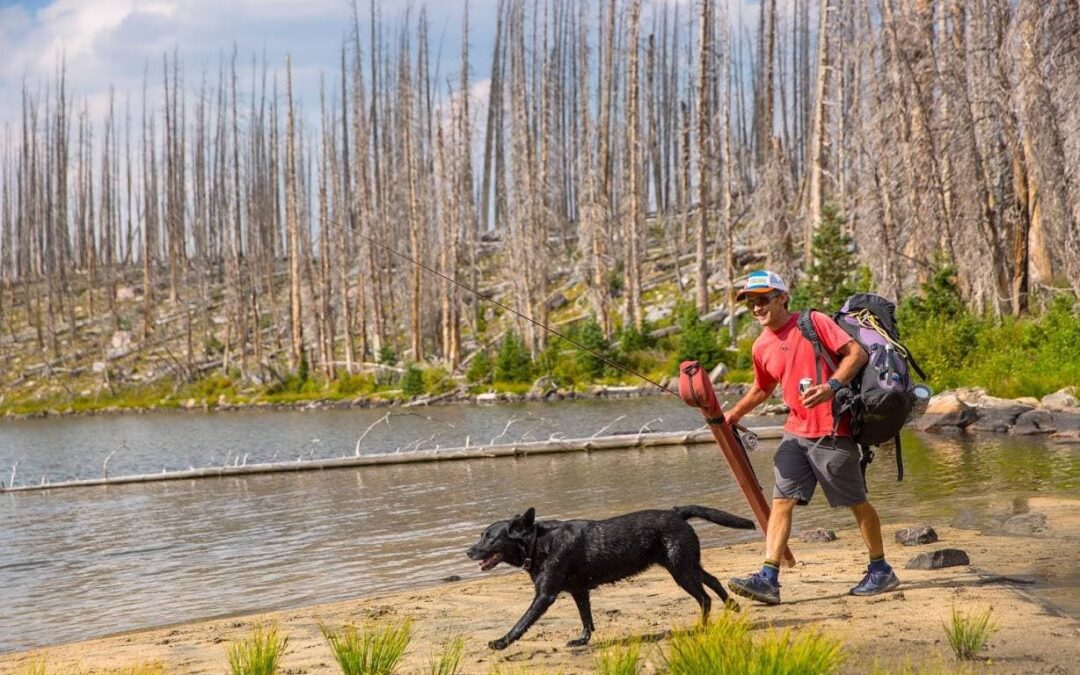By Callie Smith. Photo by Noah Wetzel
The heat of summer hiking can present unique challenges to health and safety, paying attention to your hydration and body temperature will help ensure a comfortable hike. Below are some items to take with you to help you have a safe and fun adventure.
- Snacks, especially salty ones
- Extra water
- Sunscreen
- A hat with a brim
Sun and heat
Be on the lookout for signs of heat cramps and exhaustion. Some of the symptoms of heat exhaustion include a throbbing headache, dizziness, muscle cramps, nausea, disorientation or confusion, and a lack of sweating despite hot temperatures.
Keep in mind that for every 1000 feet of elevation gained the UV Index increases by 8-10% according to Rocky Mountain Urgent care. Wearing sunscreen or UV-protective clothing and sunglasses will help minimize sunburn.
Safety for our furry friends
Just like humans, dogs are affected by hotter weather. If you want to bring your dog along on a summer hike with you avoid hiking in the hottest part of the day. Try to adventure in the morning or evening when the weather is cool. Also, remember to bring extra water for your dog. It’s a good idea to bring extra water and a drinking container specifically for your dog so that both you and your hiking buddy can stay hydrated on the trail. Taking extra rest stops in the shade will also help keep both you and your dog from overheating in the summer.
Wildlife encounters
Remember that we share the CDT with many other users, including wildlife. A general guideline to follow when interacting with wildlife and/or grazing animals on the trail is to give them plenty of space and do not attempt to feed them.
- Bears: If you encounter a bear, do not approach it and consider carrying bear spray if you are in grizzly country. Take steps to secure your food in areas where bears are present. In grizzly country, periodically make noise while hiking, such as calling out, “Hey, bear!” and clapping your hands, particularly when in dense brush, to avoid surprising a bear.
- Moose: Do not approach a moose if you see one. Cut a wide berth around it if it is blocking the trail.
- Mountain Lions: Mountain Lions live in all the states along the CDT. They are very rare and it is unlikely that you will see one. If you are attacked by a mountain lion, make yourself appear larger, make noise, keep eye contact, and fight back.
- Snakes: Rattlesnakes are common along the CDT. Do not try to pick up or touch rattlesnakes. If you are bitten, you should try to get off the trail and find a road as soon as possible.
Leave No Trace
The CDT is a beautiful place, and we can all help to keep it that way! Leave No Trace guidelines are a great resource for understanding how to recreate responsibly on the CDT. Follow the seven principles of Leave No Trace:
- Plan ahead and prepare for your trip. This will keep you, those around you, and your environment safe.
- Travel and camp on durable surfaces. Stay on the trail to avoid damaging plants and wildlife.
- Dispose of waste properly. Please do not leave your trash on the trail. Whatever you bring onto the trail should leave with you.
- Leave what you find: Although the wildflowers may be beautiful, leave them for the next traveler to enjoy.
- Minimize campfire impacts: Check with state and local guidelines before building a fire in the first place. In many places along the Divide, fire restrictions are currently limiting what is permitted. If you do decide to have a campfire, make sure that the coals are completely cool after putting them out.
- Respect wildlife. Try to quietly observe wildlife without disturbing them.
- Be considerate of other visitors. Be respectful of others who are visiting the CDT by avoiding things like excessive noise.
With these tips in mind we hope that you are able to have a beautiful summer adventure on the Continental Divide Trail!
Callie Smith is the Community Engagement Coordinator at the CDTC. In her free time she enjoys rafting and learning to knit.

